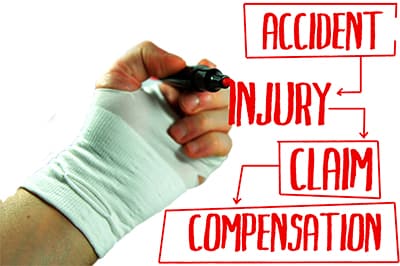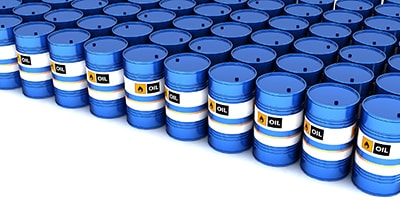Hand Safety in Oil and Gas Industry
 The Petroleum Industry has undergone a historic boom, with new technology coming in place. The employment in the oil and gas industry is growing time and again and the jobs in this sector are one of the most dangerous and hazardous. Together with occupational risks, there arise safety risks which include bodily injury to fingers and hands. These are the most vulnerable physical parts which are easily prone to risks and dangers.
The Petroleum Industry has undergone a historic boom, with new technology coming in place. The employment in the oil and gas industry is growing time and again and the jobs in this sector are one of the most dangerous and hazardous. Together with occupational risks, there arise safety risks which include bodily injury to fingers and hands. These are the most vulnerable physical parts which are easily prone to risks and dangers.
The finger and hand injuries are regularly featured in the petroleum company’s incident records. It made up to 50 % of the accidents in the sector. As per the 2014 statistics issued by the International Association of Drilling Contractors, 43% of the recorded incidents on the exploration and production rigs were comprised of just the injuries related to hand and fingers. Due to which, the companies involved in the oil and gas exploration and production industry are employing more injury prevention strategies.
These kinds of risks are included in the occupational hazards in the petroleum industry. The hazards are omnipresent, ranging from upstream to midstream and downstream as well. The workers are prone to come in contact with the heavy equipment, chains, pipes, and flash fires, which may result in accidents. Despite the regulations with regards to personal protective materials, the risks are high.
The workmen in such a dangerous environment deserve better safety and protection. The industry has to adopt specific standards and regulations that should mandate the following:
- Educating the workforce about the risks and how to employ safe practices
- Usage of appropriate personal protective equipment (PPE) which shall start with requisite hand protection
Hazards such as struck by objects or being caught between dangerous equipment as well as exposure to heat, flares, fires and chemicals, cause inherent bodily harm, which is long-lasting.
The companies are obliged to conduct a proper risk assessment and thereby affording the employees a chance to understand how the risks can be avoided and mitigated. This can minimizing finger and hand injuries. The company should prioritize the minimization of exposing the workmen to unnecessary risks.
It is pertinent to note that technology has advanced in this industry where injuries can be said to have been reduced. The technology used is such as pipe handling via remote control in the case of oil and gas pipe drillings.
Introduction of advanced expertise and technology
 There are kinds of injuries which have witnessed reduction when the technology is put to use. These technologies consist of remote-control pipe handling systems in the exploration and production rigs. One of the significant changes is separating the human touch from the machinery but still controlling the operation and thereby improving the safety standards in the industry.
There are kinds of injuries which have witnessed reduction when the technology is put to use. These technologies consist of remote-control pipe handling systems in the exploration and production rigs. One of the significant changes is separating the human touch from the machinery but still controlling the operation and thereby improving the safety standards in the industry.
One of many examples of these technologies is the “Iron Derrickman”. It is installed on the drilling oil rigs where it is carried out with the elimination of the necessity of personnel above the derrick and floor below on the floor of the platform. This further results in a rapid reduction of the risks which are exposed during the handling of the pipes and rigs. One of the other methods is remote top drive technology which is undertaken via the handsfree case.
The petroleum companies operating in international waters are under an obligation for complying with the regulatory requirements which stipulate the usage of remotely operated and unmanned vehicular equipment. However, it is essential to take into consideration that this advanced technological equipment will create dangers to human and in a specific event, these significant accidents have taken place — collisions between these uncrewed vehicles and personnel as well between structures and with the equipment itself.
In spite of increased and enhanced awareness amongst the workers and improvement in the training of the employers within the industry, the number of injuries about hands is keeping on increasing. This trend is evident at all the places since these risks are inherent in every workplace or job.
According to one of the occupational health and safety magazine in the oil and gas industry, majority of the incidents are related to hands, arms and fingers. It can be easily construed that hands and fingers are not much prone to hazards, but the reality is that hands take most of the risks and dangers and suffer a lot of exploitation.
Generating awareness amongst the oil and gas companies is effective on its own where these organizations have come up with campaigns for health and safety where informative posters and animation will help the creation of a safe environment at the workplace. The companies need to approach the protection and security from within the organization to combat the ever-changing and ever-increasing risks of injuries.
Risks about non-equipments:
Equipment and machines do indeed create hazards and dangers on-site, but the second contributor towards the injuries can be afforded to the corrosives or more say, the chemicals. These chemicals are hazardous and irritant to the sensitive areas of the skin, which is highly capable of damages which can prolong for an extended period.
These corrosive chemicals cause hazardous risks and damages including hand blistering, skin loss and sometimes even the rehab therapists and the doctors would not be an able cure. The second hazard is the absolute temperature where the hands become so sensitive that protection is highly necessary during operations. There is also another risk of electrical burns and shocks which are common in day to day life and cause approximately a thousand deaths per year.
How to prevent injuries at the workplace:
It is of utmost importance that such damages must be avoided and taken care of. It mainly occurs due to incorrect positioning of the fingers or hands, which indicates that the safety training has not been taken place for the workers or the personnel. Another issue is the improper use of the tools. It is the job of the company to provide proper training and understanding of the practical applications of the devices.
Further, even improper outerwear contributes a lot to finger injuries. Such as continually wearing rings and cuffs, which can substantially hamper the proper operation of the machinery within the electrical zones. The worker should be wearing gloves and protective gears all the time. For example:
- Rubber gloves and protective guards
- Electrical gloves for electrical work
- For cutting, use of steel mesh gloves
- Limit the use of soft cotton or canvas gloves
The UAE Federal Law Number 8 of 1980 concerning the Labour law mentions explicitly that the employer must create such an employee-friendly environment and provide with an adequate measure for their protection. Pursuant to that, the oil and gas companies have to make sure that they comply with the different permits and regulations that are brought about by the municipalities in the UAE. Also, it is the duty and responsibility of the municipalities to conduct regular compliance checks at such platforms and rigs.
 Despite continuous efforts from the petroleum companies regarding safety and protection and hazards mitigation, the number of injuries is increasing year by year, and no substantive solution is provided for its improvement. With repeated and unstoppable synergies from the companies as well as the employers, we can surely achieve the second step in human safety and protection and devise a strategy which is work and employee friendly.
Despite continuous efforts from the petroleum companies regarding safety and protection and hazards mitigation, the number of injuries is increasing year by year, and no substantive solution is provided for its improvement. With repeated and unstoppable synergies from the companies as well as the employers, we can surely achieve the second step in human safety and protection and devise a strategy which is work and employee friendly.
It can be undoubtedly said that improvement in technology for oil and gas drilling rigs can play a significant part in mitigating risks, but it is also important to note that there is equal involvement of the employees and the employers together achieving a similar goal of safety and risk and hazard mitigation.
 Русский
Русский
 English
English 官话
官话 português
português عربي
عربي
 Türk
Türk 






.jpg)













